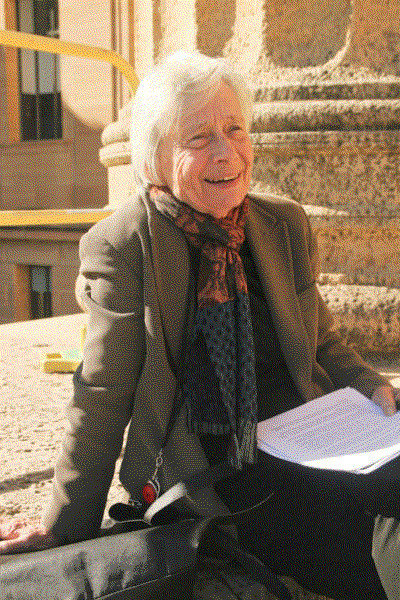
Ken Matsubara (b. 1948)
Waning Moon, 2017
Ink, earth, mica, and white gold on paper; mounted as a set of four fusuma (sliding-door).
Panel: 70 5/8 x 46 1/2 in. (179.4 x 118.1 cm); overall: 70 5/8 x 186 in. (179.4 x 472.4 cm).
Purchased with the Henry B. Keep Fund, 2019.
Matsubara Ken lives and works in the mountainous region of Tochigi Prefecture, northeast of Tokyo. Throughout his career he has always worked the local earth and clay into his paintings. Here Matsubara applied a reddish ground layer of iron-rich mud dye called bengala oxide, which he combined with resin over handmade Echigo paper. Though not visible on the finished surface, this layer provides a flexible texture onto which Matsubara applied stamped and combed patterns. Over these he applied additional gray and tan-toned mud dyes to create the sky and waves. The final layers consist of white-gold leaf for the moon and thick mica to accentuate the wave caps. While basing this work on the traditional sliding-door format, Matsubara also has created novel luminous and mysterious effects.
The four panels that comprise Waning Moon are part of a larger twenty-four-panel series, Kūkai’s View, Sun and Moon. Kūkai (also known as Kōbō Daishi, 774–835), the renowned Buddhist monk, poet, and scholar, remains a venerated figure in Japan to this day. In his early twenties Kūkai spent a period of time in solitary meditation and mantra recitation at Cape Muroto, near the precincts of Zentsū-ji, in Shikoku (fig. 1).1 In 2015 Matsubara followed in Kūkai’s footsteps to meditate and find inspiration for this series.2 Two years later Matsubara began painting, completing the entire set of fusuma in the fall of 2017. As an homage to his inspiration, underneath the painting on each panel Matsubara brushed a poetic text by Kūkai, taken from the latter’s Hizō Hyōyaku (The precious key to the secret treasury).3
The waning moon represents the passage of fullness of time in nature, echoed by the life cycle of humans. It often appears as a dramatic silver appliqué on Momoyama-period screens, referencing the experience of loss explored in the Tales of Ise or the Tale of Genji. Here, the white-gold moon floating amid waves reflects this literary cultural past, as well as the philosophy behind this aesthetic that is rooted in the Buddhist world view of the transience of life, and the endurance of nature.
1 Kūkai subsequently traveled to China to study Esoteric doctrines, which he brought back to Japan as founder of the Shingon sect.
2 These paintings were originally commissioned as fusuma sliding doors by Hayashiya Seizo (1928–2017), director of the Musée Tomo and a noted connoisseur of tea wares. They were destined for the Jingoji temple in Kyoto where Kūkai stayed after returning from China. However, Hayashiya passed away before the completion of the works, so the series became available.
3 For a translation of the complete text, see Yoshito S. Hakeda, Kūkai (New York: Columbia University Press, 1972), 157–224. See also a video of Matsubara at work at https://www.ippodogallery.com/video/9-process-of-making-kukai-sun-and-ken-matsubara/.

Felice Fischer
Curator Emerita of Japanese and East Asian Art
Philadelphia Museum of Art
2023

